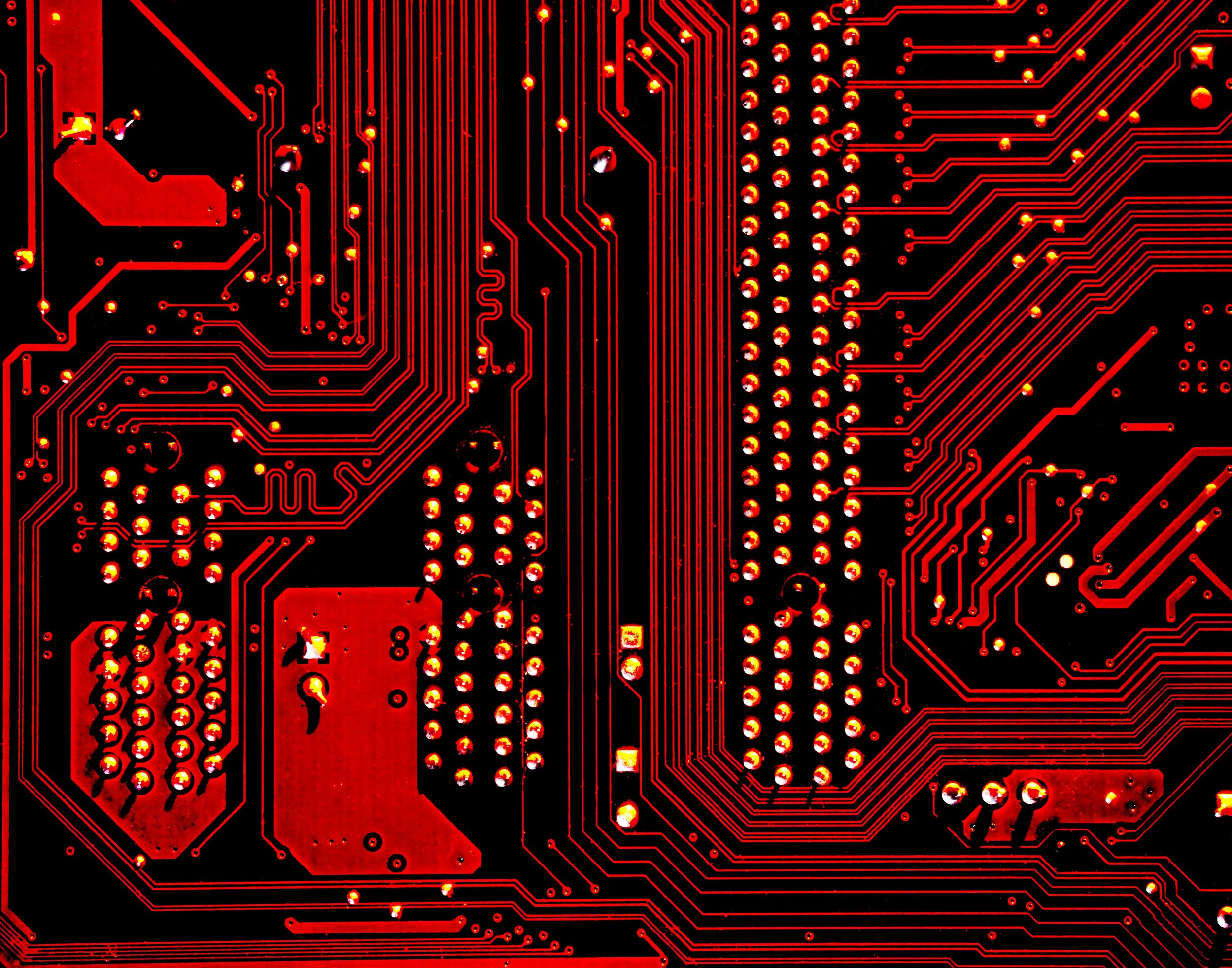Technology and Innovation in the Era of Artificial Intelligence
Technology is moving at an incredible pace. We live in the fascinating era of autonomous cars, computer vision, personalized medicine, and quantum computing. Artificial Intelligence, crypto-currencies, advanced automation, deep learning, and concepts like Universal Basic Income are about to reshape our world.
Our digitized world accelerates innovation in many ways. The unprecedented pace of innovation we experience is powered by a massive digital ecosystem of resources, tools, infrastructure, and advanced capabilities that a few years ago would have been classified as ‘science fiction.’ Our social structures and work models are impacted by recent innovations leading to new forms of communication and collaboration. Movements such as the open-source and open collaboration both drive innovation and benefit from it. The following describes the state of digital technologies and the things to come.
We generate an astronomical, rapidly growing amount of data
The world’s network of humans and machines generates astronomical volumes of data. It is estimated that the digital universe will size about 175 zettabytes by 2025. And this volume is growing exponentially. Of course, a significant percentage of this is just noise or also fake, low quality, and unreliable. But subsets of this data describe most types of human activity at a global scale, and at the same time, at an amazing level of detail.
Along with the events coming from connected devices and the measurements from billions of sensors – this massive, growing data set forms a new type of ‘global memory’: a vast amount of time-series of events and signals, machine states, news, opinions, research findings, discoveries, social interactions, decisions, environmental measurements and more. The historians of the future will be able to look back and reproduce the planet’s activity with a granularity of seconds. The machines of the future will be able to consume and make sense of our reality in ways we cannot even imagine.
Of course, there are substantial ethical questions and concerns regarding ownership and usage of this data: how might we use, protect, and leverage humanity’s accumulated data in an ethical way and for the greater good? This question could be an excellent theme for innovation on its own as we should not rely on political will and corporate social responsibility; regulation is only a part of the solution. Technology itself can provide excellent ways of data ownership and ethical use.
Check also: our unique Innovation Toolkit - a collection of seven innovation templates that empower teams to frame problems, shape ideas, run hackathons, and more.
Our data processing capability is impressive but still limited
Current data processing technologies are capable of making sense of the vast amounts of content we produce. Sophisticated algorithms can identify non-obvious patterns in the data and generate insights that make applications and devices smart. Statistical and machine learning algorithms allow optimal, real-time decision-making in complex situations – for example, powering autonomous cars to react in optimal ways, enabling systems to identify cyber-attacks, or controlling the traffic load of a smart city. Artificial Intelligence empowers computers to see, to listen, to smell[ii], and soon to infer – to deduce new information from existing knowledge. Machines can already recognize human emotions, and they can communicate verbally at an impressive level. But still, there is massive untapped value in the immense volumes of data and content we produce.
The amount, breadth, and depth of the world’s accumulated data create the need for new ways to summarize, visualize, and present information and insights. To deal with the potential of information overload, companies will soon feel the need to move from regular reports and dashboards to automatically synthesized data stories and smart insights. Executives will soon interact with Business Intelligence agents providing instant answers to business questions instead of multi-page reports and worksheets. The world needs novel methods to experience and make sense of the massive data we generate. Intelligent interactive synopsis, personalized insights, ‘data navigation’ systems, VR and AR experiences to visualize complex ‘data worlds’, and voice-driven insights are just some examples of potential innovations in the data space.
Read also: Can innovation help us solve global problems such as climate change?
How could innovation help in mitigating the ongoing damage and eventually help us handle the problem? What are the notable efforts in this direction? Dragana Vukasinovic, Anthony Mills, Daniel Burrus, David Blake, Michael Stephen Crickmore, and Christos Dimas share their interesting perspectives. Get your free copy of the ’60 Leaders on Innovation’ eBook.
Artificial Intelligence is getting truly intelligent
In the field of Artificial Intelligence, Computer Vision and Natural Language Processing are characteristic examples of recent advances. Simply put, Computer Vision is the class of algorithms that allow a computer to see – to analyze images and videos and identify entities, objects, and specific instances such as locations, persons, things – or even the situation and the particular occasion visualized in an image. Combined with other technologies such as fast networking, edge computing, and Computer Vision, creates opportunities for breakthrough innovations across domains – from transportation (autonomous cars, self-organizing fleets, navigation systems, and smart cities), medical systems (diagnosis), robotics, and more.
At the same time, Language Understanding is making tremendous progress. Digital assistants become more intelligent, contextual, and proactive – interactive in a conversational mode, able to drive meaningful dialogues instead of just responding to an isolated question. They are able to know who they are talking to by analyzing the voice in real time, and they will soon be able to offer personalized responses – matching the communication style and information needs of each specific user. By leveraging accumulated knowledge about the user, conversational experiences will become more personal, useful, and relevant for the particular user, the moment in time, and the estimated mood.
The AI-powered translation is becoming more accurate and faster – recent advances allow speech-to-speech translation while maintaining the tone of voice and other voice attributes of the original speaker. With the help of Artificial Intelligence, communication with machines is becoming seamless – hence the term Natural User Interfaces. People are already interacting naturally with smart devices – we can control simple functions of our home via our smart speaker or digital assistant or use voice commands to perform a web search and manage our calendar. Soon, we will be able to use not only voice but also haptic interfaces – a technology recreating the sense of touch by applying force feedback, vibrations, or motions to the user. Voice commands will evolve into conversational interfaces – less structured and more natural.
Our reality gets augmented
Technology is not only changing how we interact with our intelligent machines but also how we see and understand the world. Typically delivered through smart glasses, Augmented Reality technology (also known as Extended or Mixed Reality) provides an extra layer of information relevant to the particular object a user is looking at or interacting with. It is what we get when physical and digital worlds blend into a single experience. This area will grow rapidly - as the space for innovation is unlimited.
New content experiences, data exploration, and visualization techniques, dynamic mapping of the physical world, industrial applications for field workers — are just some examples of the applications that are in the way and are about to change the ways we understand the world. Analogous progress and opportunity for innovation exist for Virtual Reality – which allows new digital worlds to be created and helps experience remote situations or settings or join a human activity happening elsewhere. Content creation and new experiences for VR/AR define a great new stage for innovations across multiple domains and business scenarios, including e-commerce, gaming, social applications, learning and education, and healthcare.
The convergence of augmented reality (AR), virtual reality (VR), mixed reality (MR), and 3D technologies that enable seamless interaction between digital content and physical environments - spatial computing - allows computers to understand and operate within three-dimensional space rather than flat screens. In the coming years, we should expect several key innovations: deeper integration of AI for context-aware computing and real-time environmental understanding; the convergence of spatial systems with IoT and digital twins for industrial applications (manufacturing, supply chain optimization, autonomous inspection); lighter MR headsets with improved battery life and ultra-high-definition displays; autonomous asset inspection, smoother supply chains. Healthcare is emerging as the fastest-growing segment with applications in surgical planning, medical training, and patient rehabilitation. The intersection of 5G connectivity, edge computing reducing latency, and agentic AI systems will likely unlock the most transformative use cases—moving spatial computing from isolated applications to ambient, context-aware computing environments embedded throughout physical spaces.
Humanity’s memory becomes persistent
Another significant advance is in the area of Distributed Ledger Technologies (DLTs) such as the Blockchain. Such systems are based on an extensive network of nodes, each running on a different machine and maintaining a complete copy of a database of transactions. Nodes communicate with each other in a peer-to-peer fashion – with no single entity or authority controlling the system. A process of transaction verification and voting among the nodes makes such technologies trustless and decentralized – they are not controlled by isolated entities, and they don’t require trust between transaction participants. Blockchain is considered to be one of the most disruptive technologies of our times. It is already powering cryptocurrencies, and it is expected to drive massive transformation in social, government, and financial sectors – as the solution for distributed, decentralized, and immutable storage of data or code (smart contracts).
Robots are - finally - getting smart
Either purpose-specific or general-purpose, robots are already here in impressive forms. The discipline of Robotics combines multiple technologies – from sophisticated hardware to advanced software systems and algorithms - to develop smarter, autonomous robots that can perform a widening range of tasks. Robots are powered by advanced Artificial Intelligence and take advantage of fast connectivity and edge computing, to perform complex cognitive tasks in real-time. They are coming in multiple form factors — humanoids, nano-robots, military, industrial, and so on. New generations of robots are also connected -- they take advantage of the world’s knowledge and digital infrastructure to become smarter and more adaptive. In the near future, general-purpose robots will become more proactive and autonomous with advanced context understanding and the ability to recognize complex situations and adapt. They will have a ‘personality’, individual communication styles, and strategies.
Biotechnology redefines life
At the same time, advances in biotechnology, bioengineering, bioinformatics are driving massive changes across industries, from medical and pharmaceutical to agriculture and food engineering. Research in Quantum computing presents significant progress – recent announcements of quantum supremacy demonstrate how this new class of systems outperforms the most powerful computing systems we currently have.
———
The years to come will bring impressive technological breakthroughs with a massive impact on our lives, markets, and societies. In our connected world, with the unprecedented level of information, knowledge, and ideas exchange, innovation is happening continuously, at scale, and in several forms. It is driven by corporations, secret labs, universities, startups, research scientists, or simply by thousands of creative individuals across the globe.
Check also: our unique Innovation Toolkit - a collection of seven innovation templates that empower teams to frame problems, shape ideas, run hackathons, and more.






An amazing collection of thoughts on the topic of corporate innovation, from 60 Leaders — Chief Innovation Officers, CxOs, academics, technologists, innovation experts, entrepreneurs, thought leaders, and start-up founders — across industries and geographies.